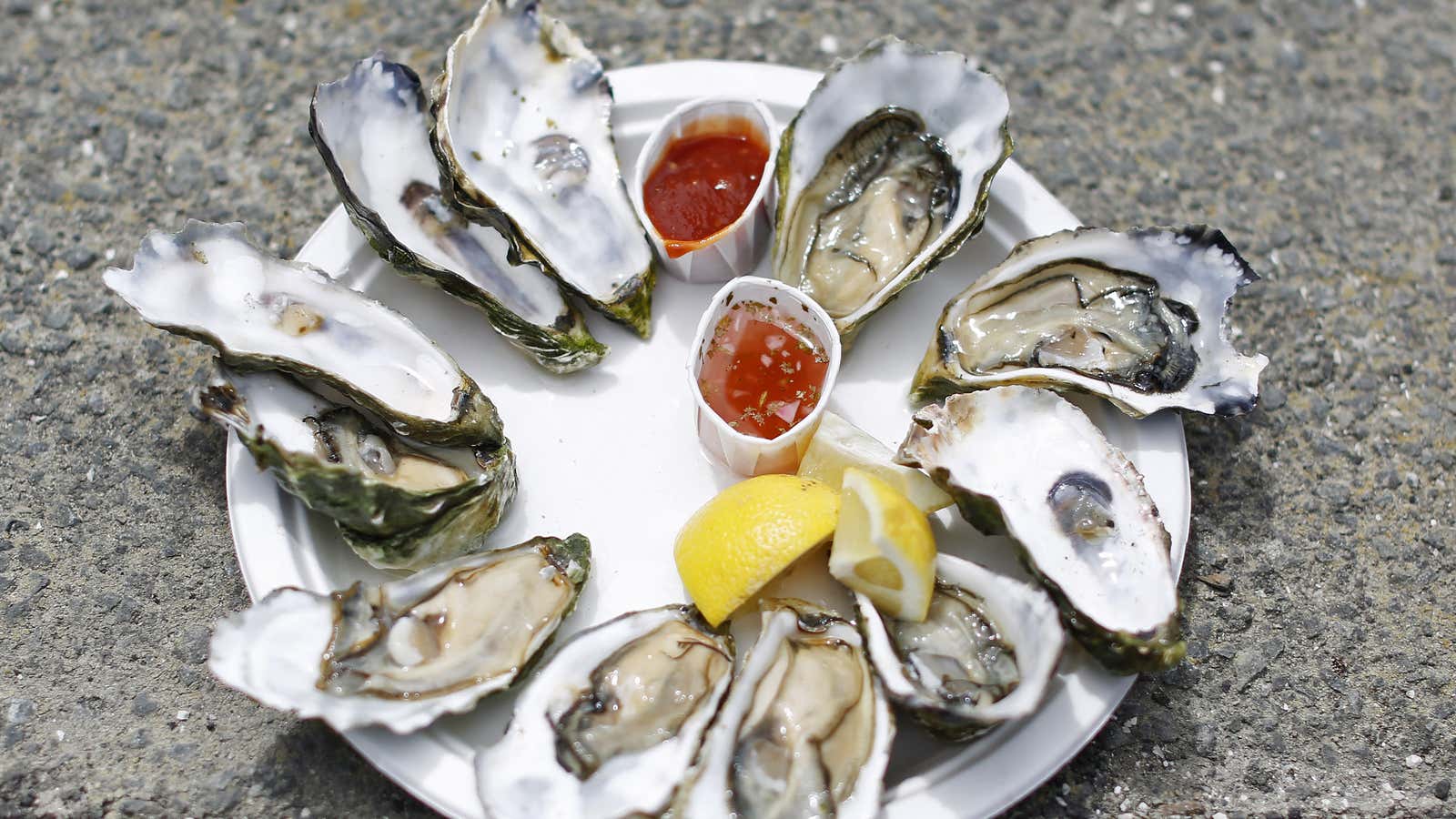Oyster happy hours are going to be getting sadder in the coming years—and we probably have climate change to blame. The connection comes from a new study (paywall) in the Proceedings of the National Academy of Sciences that links the rapid rise in sea temperatures in the North Atlantic with a surge in Vibrio, a genus of bacteria that thrives in shellfish and teems in coastal waters—and can be fatal to humans.
In the US, for instance, Vibrio infections have killed a little more than 40 people a year since 2009, while landing another 300 or so in the hospital. And these figures are probably conservative estimates; Vibrio cases are likely underreported, reports Maryn McKenna, an expert in bacteria and public policy.
It’s pretty hard to miss the truly alarming thing about the chart above: that the total number of Vibrio infection cases has been climbing steadily for years. And that’s likely due to how climate change is cooking our seas. The new research is significant because it’s the first to link rising ocean-surface temperatures to Vibrio abundance and disease incidence. Since the deadly bacteria thrives in warmer water, climate change is sickening more and more people.
There are a couple of ways Vibrio gets inside human bodies. Swimmers can become infected when the bacteria living in the water enters an open cut. However, around half of those sickened in the US catch it from eating contaminated food.
Oysters are a common offender. In 2014, more than six out of every 10 Vibrio infection patients who had eaten only a single seafood item—and therefore could narrow down the likely culprit—had been slurping down raw oysters. This is probably because oysters filter water when they feed. And when said water is teeming with Vibrio, the bacteria builds up in the shellfish. It also grows on the bodies of crustaceans, contaminating meat of popular seafoods like shrimp and crab.
Why exactly Vibrio likes warmer water isn’t clear. The research team hypothesizes that it might have to do with how hotter seas are altering the balance of plankton, favoring the types that the bacteria feeds on.
Besides posing a threat to human health, this freak Vibrio boom is likely to cause all sorts of other problems. The bacteria is known to kill some marine organisms en masse, which means its growing presence could scramble ecosystems in unpredictable ways.
It’s also not great for fishermen. Looking at oysters alone, Americans harvested $249 million in 2014—the most in nearly 30 years.




